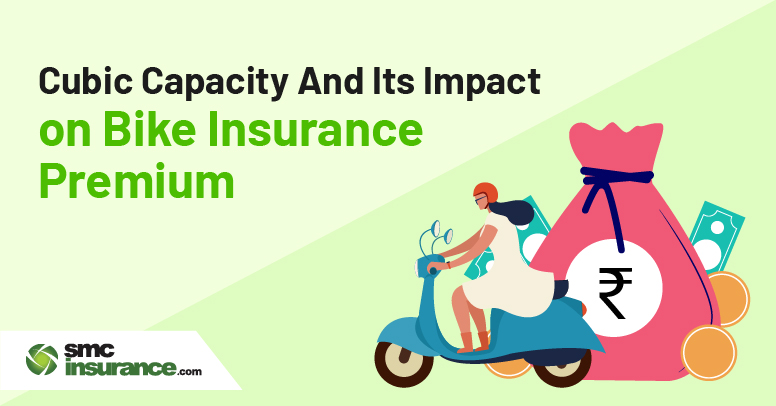When standing in front of a lineup of sleek bikes with each one beckoning you with its unique style, you might get confused about which one to go for. And in such situations, ‘cubic capacity’ takes over their glossy exteriors and sleek designs in determining your two-wheeler companion. Commonly known as CC, cubic capacity is the driving force behind the power of a bike’s engine. In other words, how a bike will perform on the road largely depends on its cubic capacity.
And, did you know that the cubic capacity of your bike can impact your bike insurance premium? When insurance providers offer coverage for your two-wheeler, they take into account a range of factors such as the type and value of your bike, your driving history, cubic capacity, etc.
In this article, let us explore cubic capacity and how it influences your insurance premium.
What Is Cubic Capacity?
Cubic capacity, also known as Engine Displacement, is a measure of the volume of a bike's engine combustion chamber. Measured in cubic centimeters, it plays a crucial role in determining the power and performance of your bike. Bikes with higher CC engines have increased torque and greater ability to reach higher speeds. However, such bikes may come with higher maintenance costs and potentially lower fuel efficiency than bikes with lower CC engines.
What Is The Impact Of CC On Bike Insurance Premiums?
There are two types of policies that protect your bike from unforeseen events - Third-Party Policy and Comprehensive Policy. Insurance providers consider the cubic capacity of your bike along with other factors to calculate the premium for both policies.
Let’s see how -
?Third-Party Policy
A third-party policy is mandatory by the law for two-wheelers. If your vehicle causes any damage or injury to a third party or property, the third-party policy steps in to cover the liabilities. However, it does not cover any damages caused to your own vehicle.
When it comes to determining the premium of a third-party policy, the Insurance Regulatory and Development Authority of India (IRDAI) sets it as per the CC of the bike. So, third-party insurance premiums may vary depending on the cubic capacity of bikes.
Here’s a table that shows the premium rates for different CC bikes -
|
Engine Capacity
|
Third-party premium
|
|
Less than 75 CC
|
₹482
|
|
More than 75 CC but lower than 150 CC
|
₹752
|
|
More than 150 CC but lower than 350 CC
|
₹1,366
|
|
More than 350 CC
|
₹2,804
|
Note: These premium rates remain the same for all insurance companies as they are fixed by IRDAI.
?Comprehensive Policy
A comprehensive insurance policy provides coverage for a broad range of risks. It covers any loss/damages caused to your own vehicle as well as third-party and their property as a result of an accident. The premium for a comprehensive policy differs from insurer to insurer, as they have different pricing for the own damage component of the policy. Thus, leading to variations in the overall premium for comprehensive coverage.
Conclusion
Just as a powerful engine demands higher fuel consumption and maintenance costs, a vehicle with greater cubic capacity incurs higher insurance premiums. We hope this article has helped you get valuable insights into what cubic capacity is and its impact on your bike insurance premiums.








